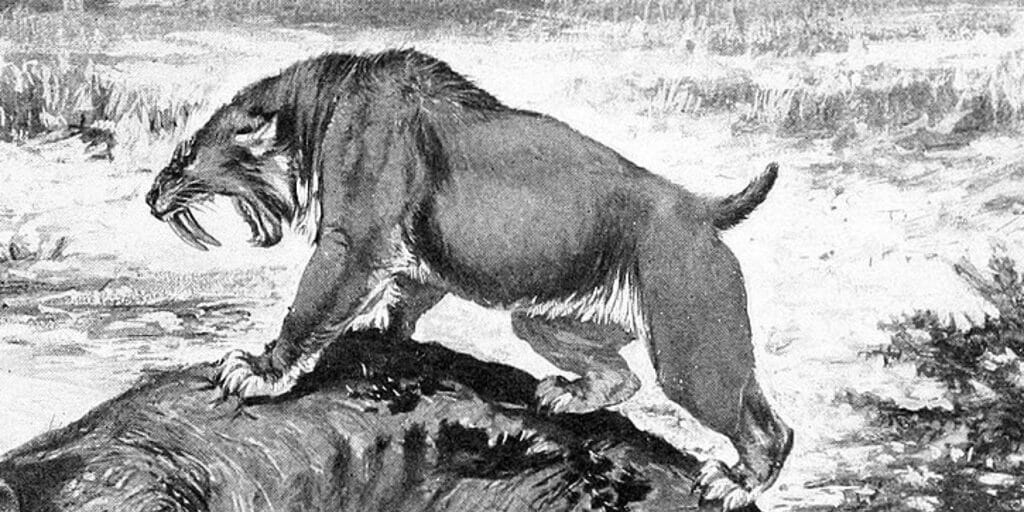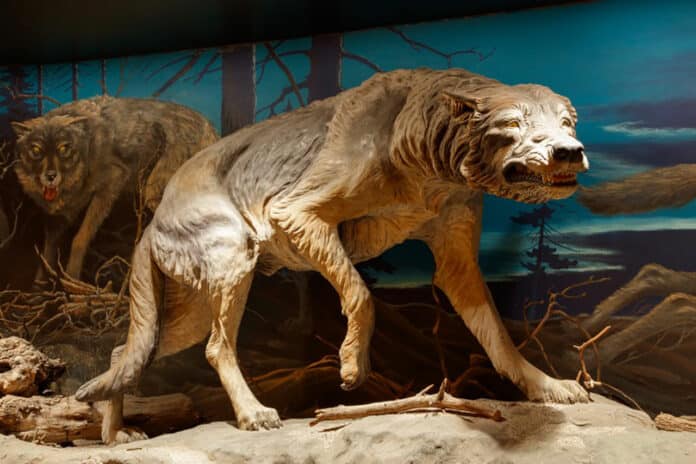Ice Age saber-tooth cats and dire wolves experienced a high incidence of bone disease in their joints, according to a study published July 12, 2023 in the open-access journal PLOS ONE by Hugo Schmökel of Evidensia Academy, Sweden and colleagues.
Osteochondrosis is a developmental bone disease known to affect the joints of vertebrates, including humans and various domesticated species. However, the disease is not documented thoroughly in wild species, and published cases are quite rare. In this study, Schmökel and colleagues identify signs of this disease in fossil limb bones of Ice Age saber-tooth cats (Smilodon fatalis) and dire wolves (Aenocyon dirus) from around 55,000 to 12,000 years ago.
Researchers examined over 1,000 limb bones of saber-tooth cats and over 500 limb bones of dire wolves from the Late Pleistocene La Brea Tar Pits, finding small defects in many bones consistent with a specific manifestation of bone disease called osteochondrosis dissecans (OCD). These defects were mainly seen in shoulder and knee joints, with an incidence as high as 7% of the examined bones, significantly higher than that observed in modern species.
This study is limited to isolated bones from a single fossil locality, so further study on other fossil sites might reveal patterns in the prevalence of this disease, and from there might shed light on aspects of these animals’ lives. It remains unclear, for example, whether these joint problems would have hindered the hunting abilities of these predators. Furthermore, OCD is commonly seen in modern domestic dogs which are highly inbred, so it’s possible that the high incidence of the disease in these fossil animals could be a sign of dwindling populations as these ancient species approached extinction.

The authors add: “This study adds to the growing literature on Smilodon and dire wolf paleopathology, made possible by the unparalleled large sample sizes at the La Brea Tar Pits & Museum. This collaboration between paleontologists and veterinarians confirms that these animals, though they were large predators that lived through tough times and are now extinct, shared common ailments with the cats and dogs in our very homes today.”
Journal Reference :
Schmökel H, Farrell A, Balisi MF (2023) Subchondral defects resembling osteochondrosis dissecans in joint surfaces of the extinct saber-toothed cat Smilodon fatalis and dire wolf Aenocyon dirus. PLoS ONE 18(7): e0287656. DOI: 10.1371/journal.pone.0287656
